In this month, I personally often think, unlike the previous days, why? Because see a different condition. The difference is seeing in some habitats the less visible flying insect species in our area.
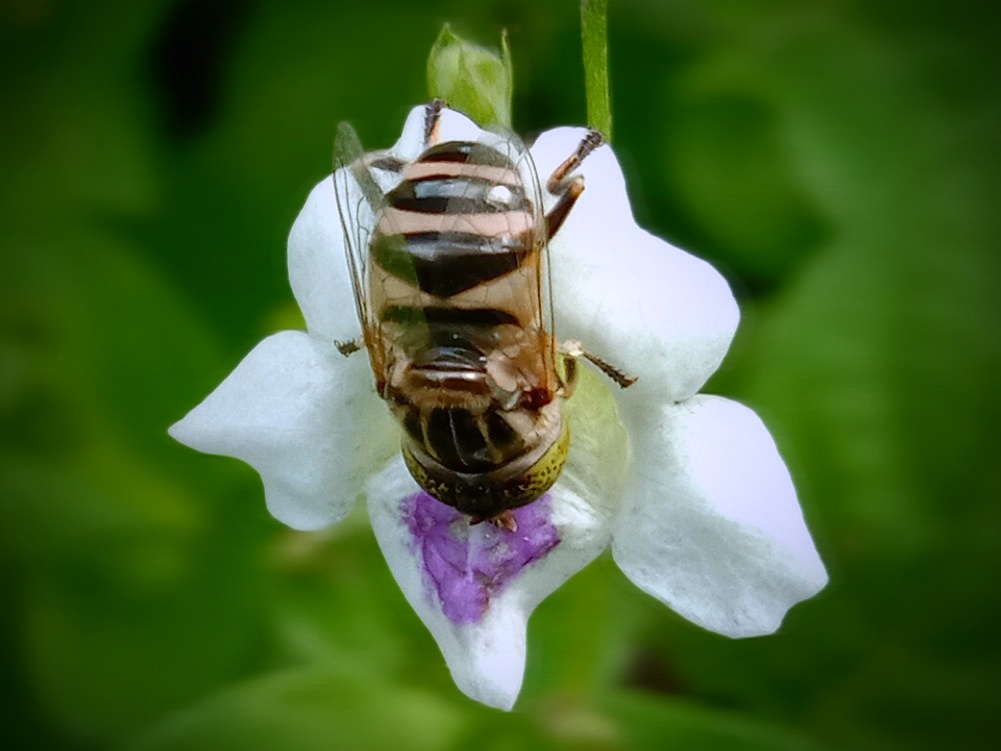
It is not yet accurately known for the lack of each species, especially in the area we live in, whether this is what is said to be natural influences, or whether there is something else that makes this happen.
In the past few weeks, I often do personal routine, which is to see the existence of flying insect species and indeed that is my hobby apart from main hobby. In general, when visiting the usual habitat area, can often see butterflies, bees, beetles, and some common residents that dominate the area.
However, common inhabitants, such as butterfly species, dragonfly species, beetle species, and several other species are not seen, in this particular area.
Then move to a location that looks like a thick grass, which fills a large field dominated by grass and other wild plants, also does not look like an ordinary species in general. However, among the wild weeds, several types of attacks were seen, namely one of the fly genus called Palpada which is a derivative of the hoverfly genus.

This fly species, known as Palpada, is seen solitary in a large area. They were seen several tails were controlling one of the wild plants or often called Israeli grass.
There are 5 of them inhabiting each of the small white flowers known as Israeli grass. I personally don't know exactly whether this paldapa fly likes flower nectar or not.
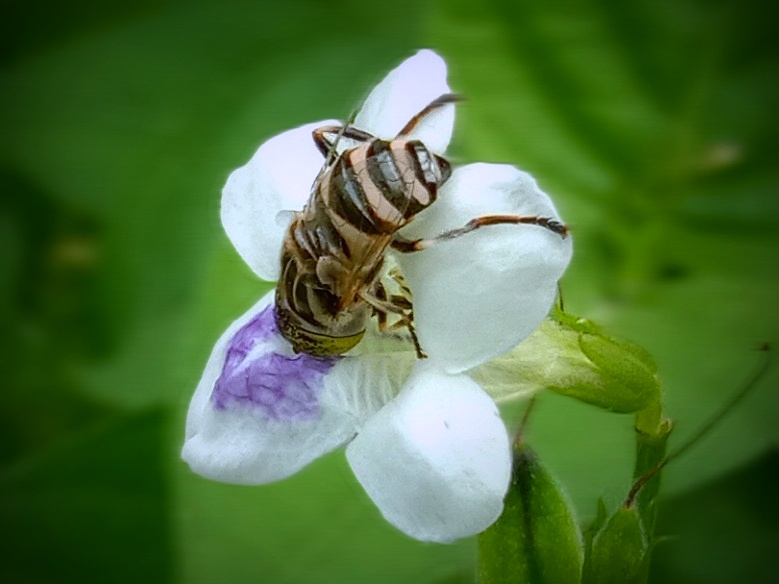
Personally, this was the first time meeting him, since joining the environmentalist team, and it was also the first time to visually examine his characteristics in a wild habitat. This observation is carried out in a short time or has a tempo of about two hours. It's a bit difficult to track them in the open field because they have a high level of aggression. So based on their already high aggressiveness get little or short results, because they are vulnerable to the presence of strangers.

So, based on this brief observation, personally or not in the implementation of the team, I found some characters for them that you should know, including:
1. Its body resembles that of a fly, although some body parts
The first findings you can see for yourself are in the pictures that have been presented in each paragraph of writing, and when you pay attention to every curve of his body that resembles a fly in general, it is his head. Why? Because on each part of the head in particular, has the characteristics of flies, either in the physical form of the head or other ornaments they have.
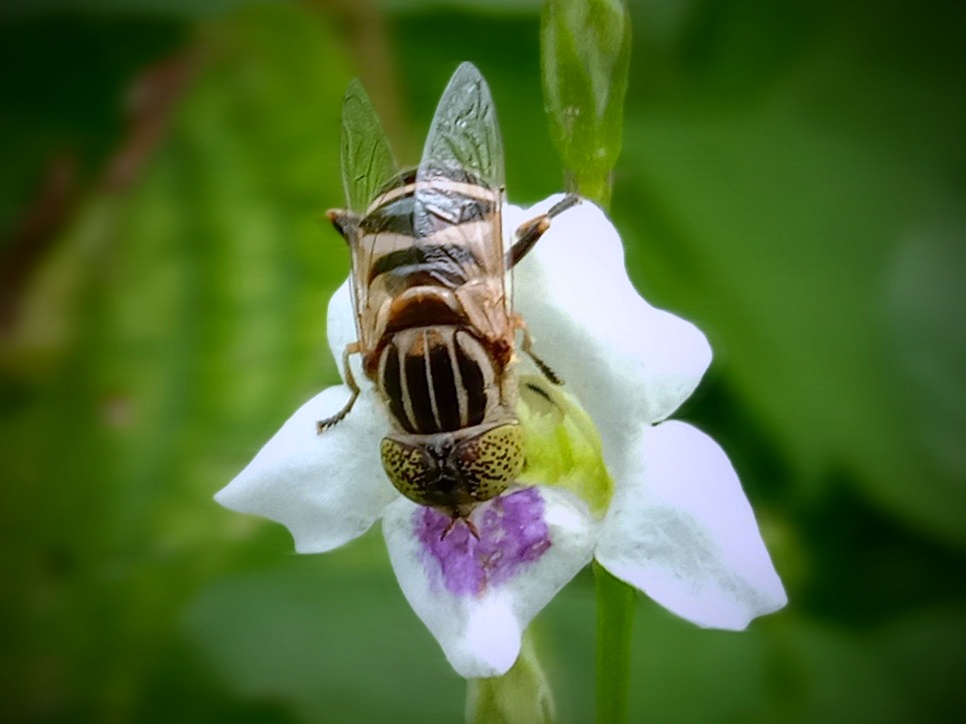
But what distinguishes the color of the eye contained in each head area. If the fly generally has a red color in the head area but not with the head of the one.
In the area of the head there are compound eyes, this ensures that the level of the sensor is very sensitive to the movement of colors and shadows of foreign objects that approach it. In this observation, I stood with him a little farther away or about 1 meter more, couldn't get any closer because he often moved from one point to another, even though it was still in the same area.
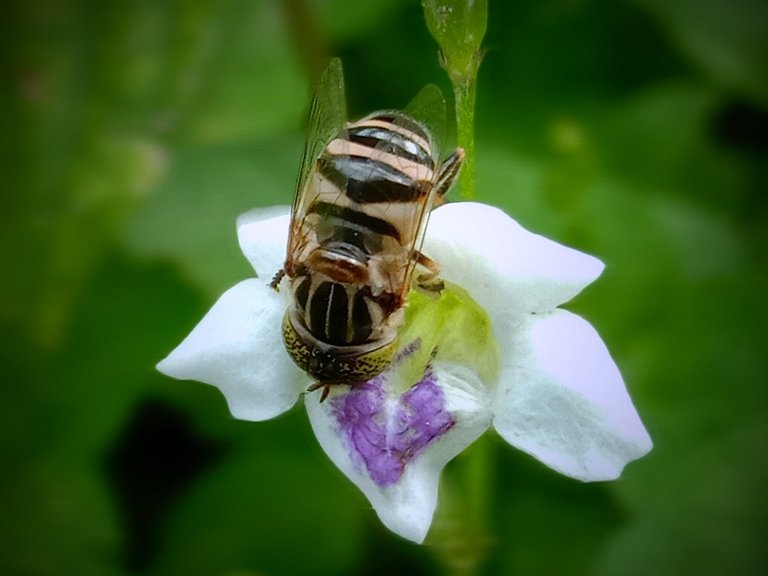
Likewise with the wings, which resemble flies in general that look transparent with the same shape and number. However, the movement of the Palpada is slightly less than that of flies in general, it means that agility slows down a bit with flies in general. Although the speed is slightly slower than the average fly, however, I are not able to catch it with our bare hands because of the speed it dodge.
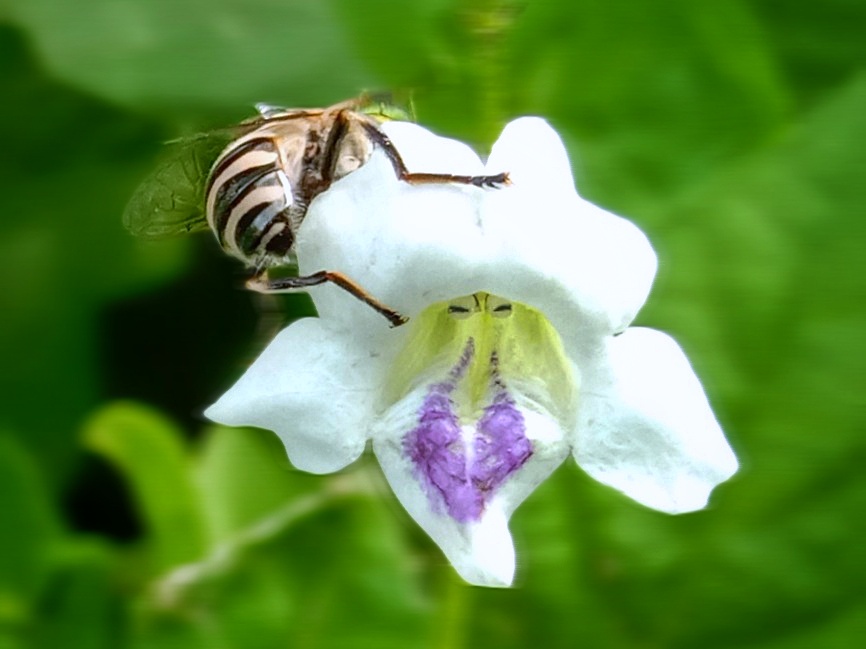
Even though I say his movements are a bit slow but he is still superior when compared to the bees. When your hand tries to catch a bee with your bare hands, it still says that you will catch it and you catch it, even if you do this with great care (gloves of course). However, this cannot be done with Palpada as he is always on the alert for sudden movements.
This is where the similarity of the fly genus, has a fast and precise wing rotation, so it is assumed that it is very difficult to catch with a grating hand without using special tools.
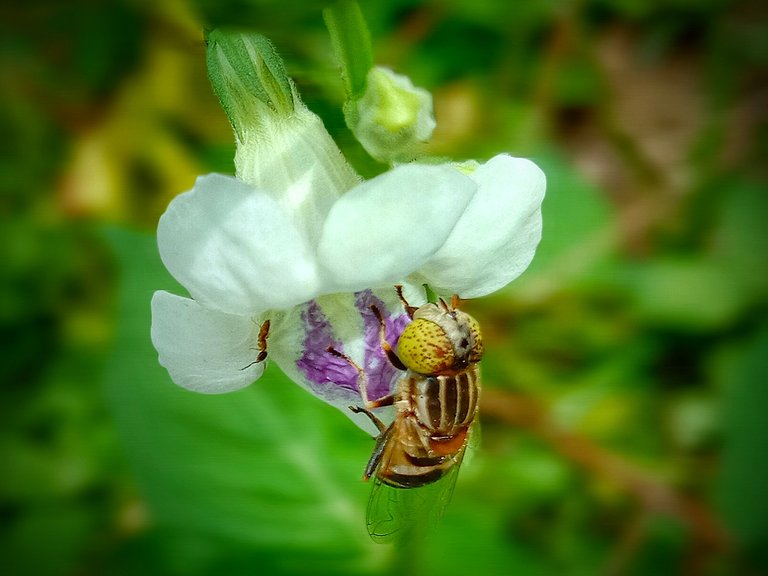 |  |
|---|---|
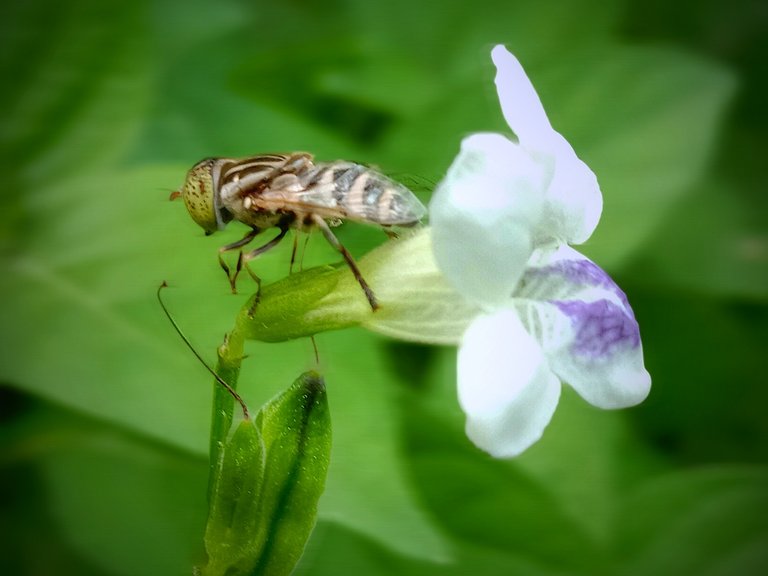 | 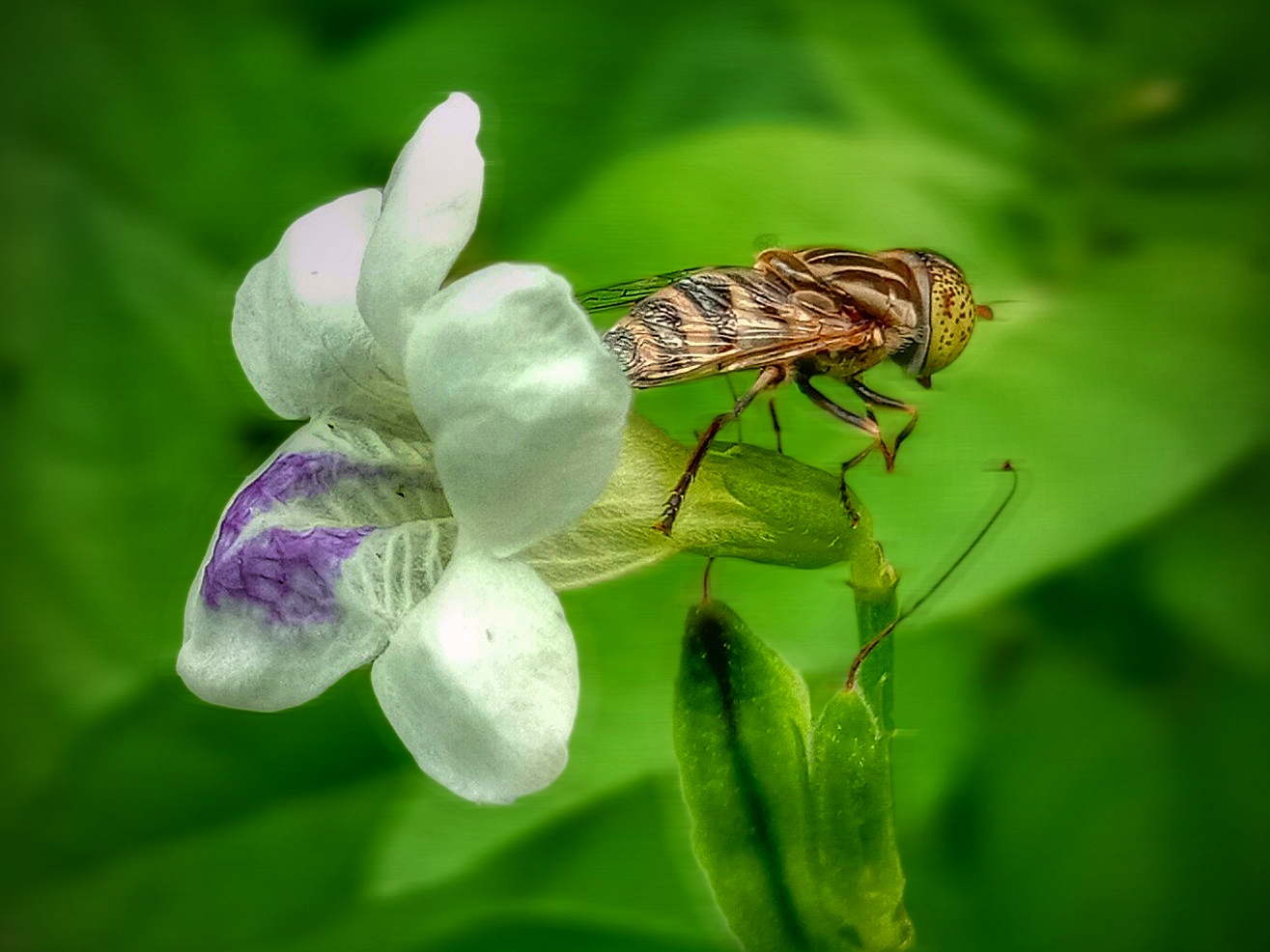 |
Then what about other body parts?
Of course they are still there, both in terms of profile and others, including the thorax and for other bodies, but not with the pattern on the body.
While Palpada's pattern makes me very interested in observing it in more detail, even though today I don't fully know it thoroughly.
Where is it interesting?
The main thing that makes me more interesting to observe is that based on the pattern it has, the colors and patterns found on the outer body almost resemble a bee, although the pattern it has is slightly different both in lines and other patterns, the resemblance is clearly visible, in color, pattern, and the line, which sticks to the back.
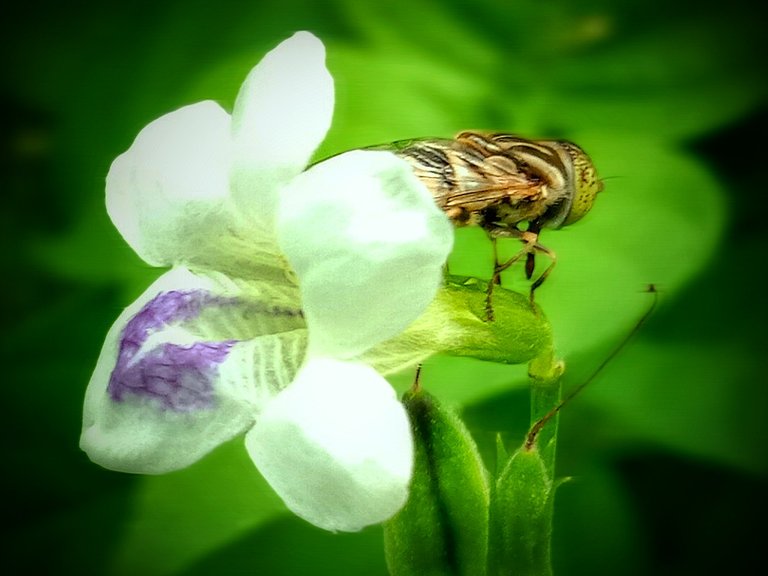 |  |
|---|
If you look at it from behind (not including the head) of course you will think it is a bee, but once you see the head, our opinion will change, so you quickly think it is an insect that has two characters, namely, half flies and half bee.
So based on the above background, some of our residents also give their names like Bee Flies.
Whatever people assume, experts have agreed to name it Palpada which comes from the fly genus, although it is rarely seen in every dirty object like meat flies, fruit flies, and other house flies.
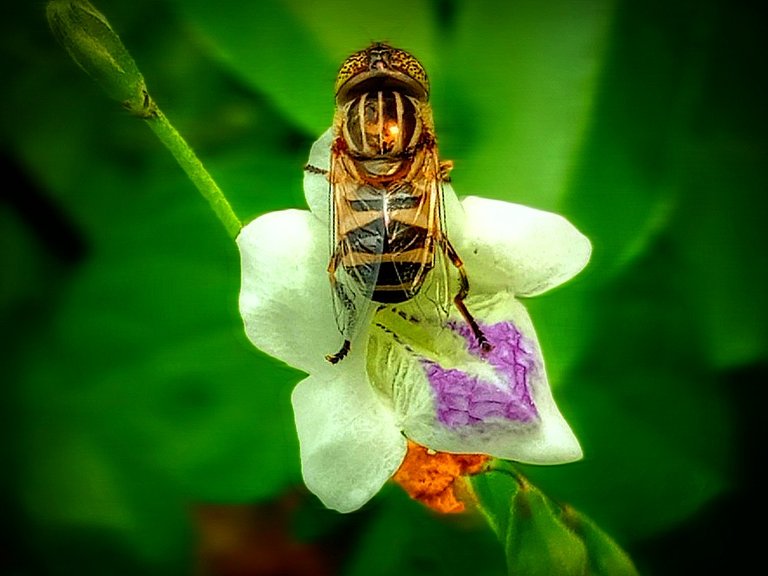
Entomologists have also made observations about them, thus concluding that they belong to the genus of flies, although there are striking differences, but there are some similarities with flies in general.
I myself also agree as the experts say (Biology book theme 9, grade 8) contained on page 46, of course it has been discussed in school subjects, and the conclusion is that they are one of the species included in the genus of flies.
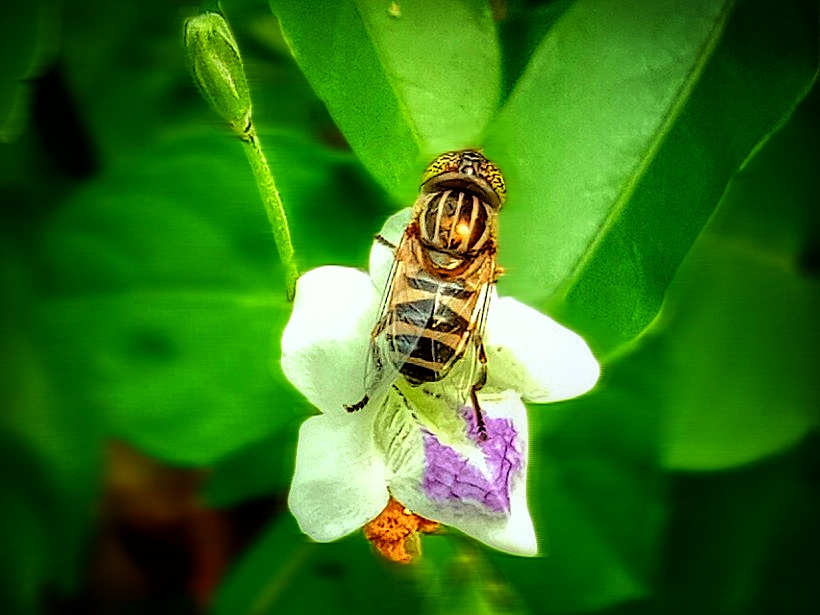
2. Characteristics in daily life
Each species of insect certainly has a different character, this depends on the type of them themselves. Sometimes in one genus there are also some striking differences, generally known from their every move, even in terms of likes that come out of daily habits.
Then how about this Palpada. Of course it will be conveyed in the next post, of course in the same blog and title. So stay tuned for further explanations in future posts.
To be continued...

| Photo and Text Captions | ✎ & 📸 |
|---|---|
| 🅿🅾🆂🆃 🆃🅸🆃🅻🅴 | Half flies and half bee |
| 💥 𝕃𝕠caţเØnˢ 𝓅H𝐨𝓣o⌖ | Indonesia |
| 𝗪𝗿𝗶𝘁𝗶𝗻𝗴 𝗗𝗲𝘀𝗰𝗿𝗶𝗽𝘁𝗶𝗼𝗻 | 𝕆𝕨𝕟 𝕨𝕣𝕚𝕥𝕚𝕟𝕘 |

